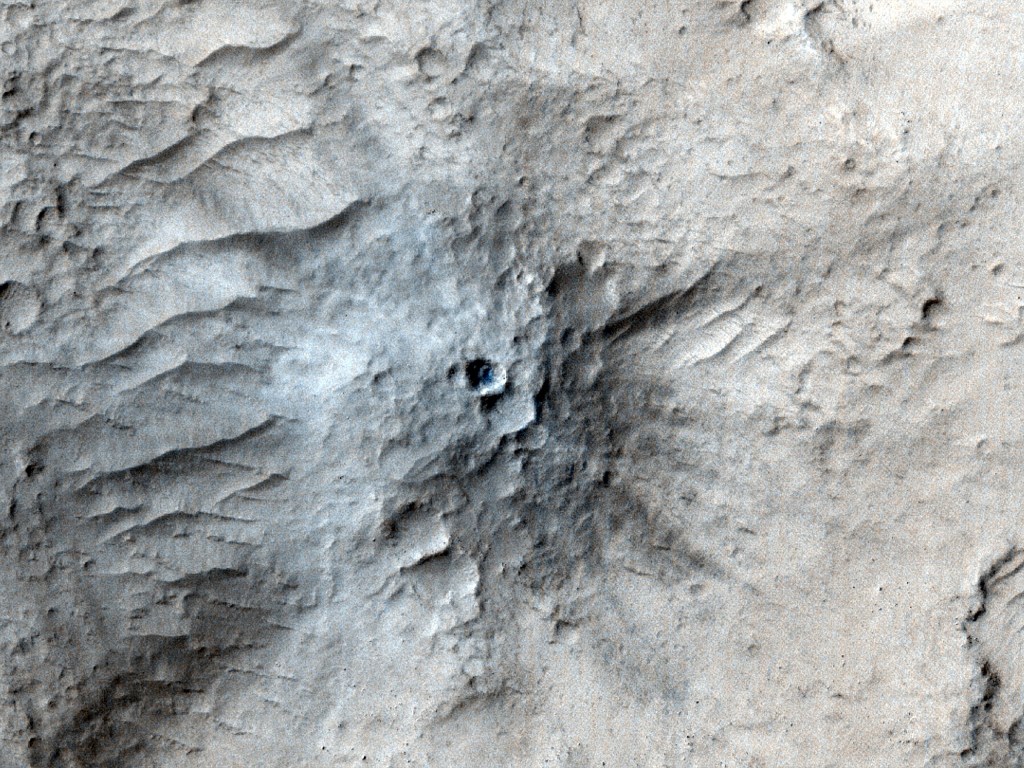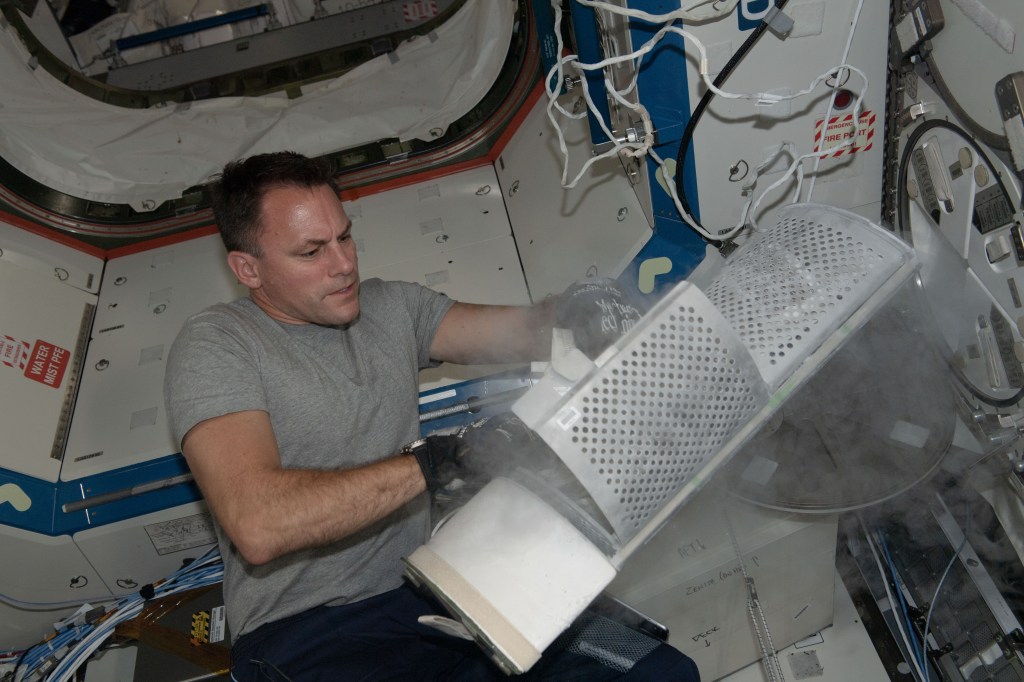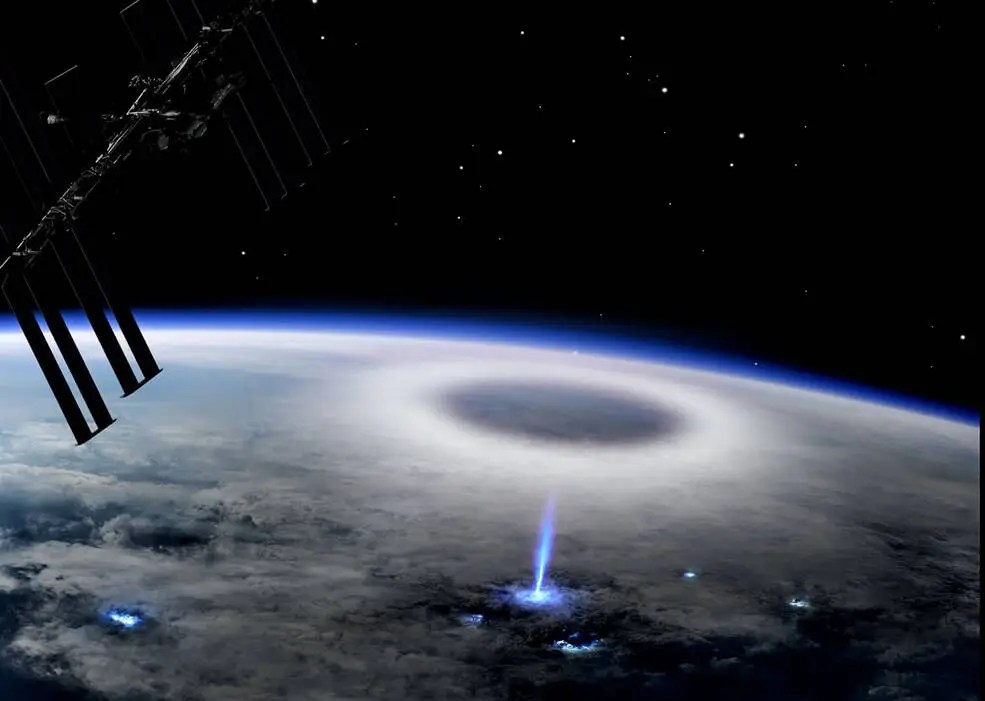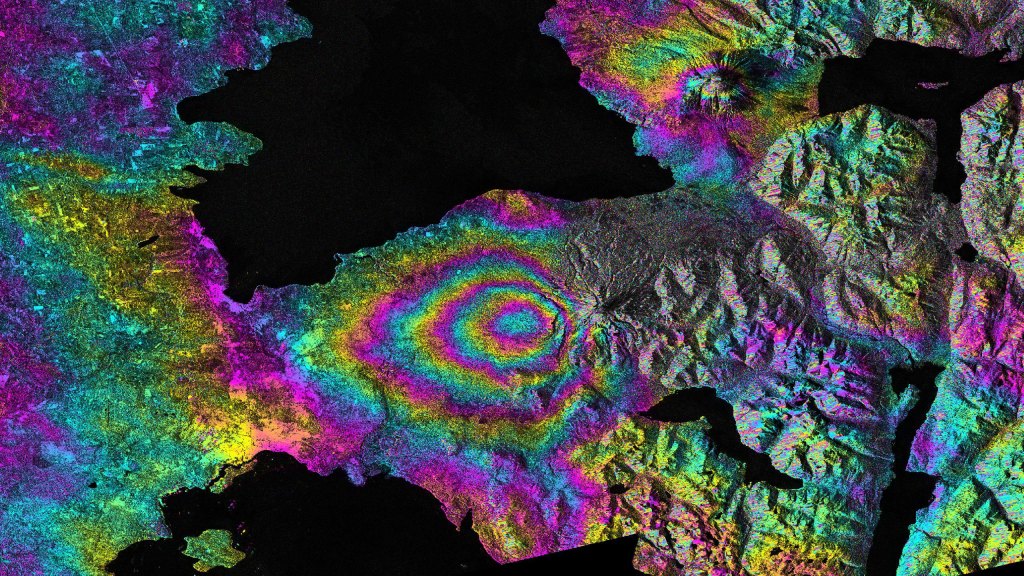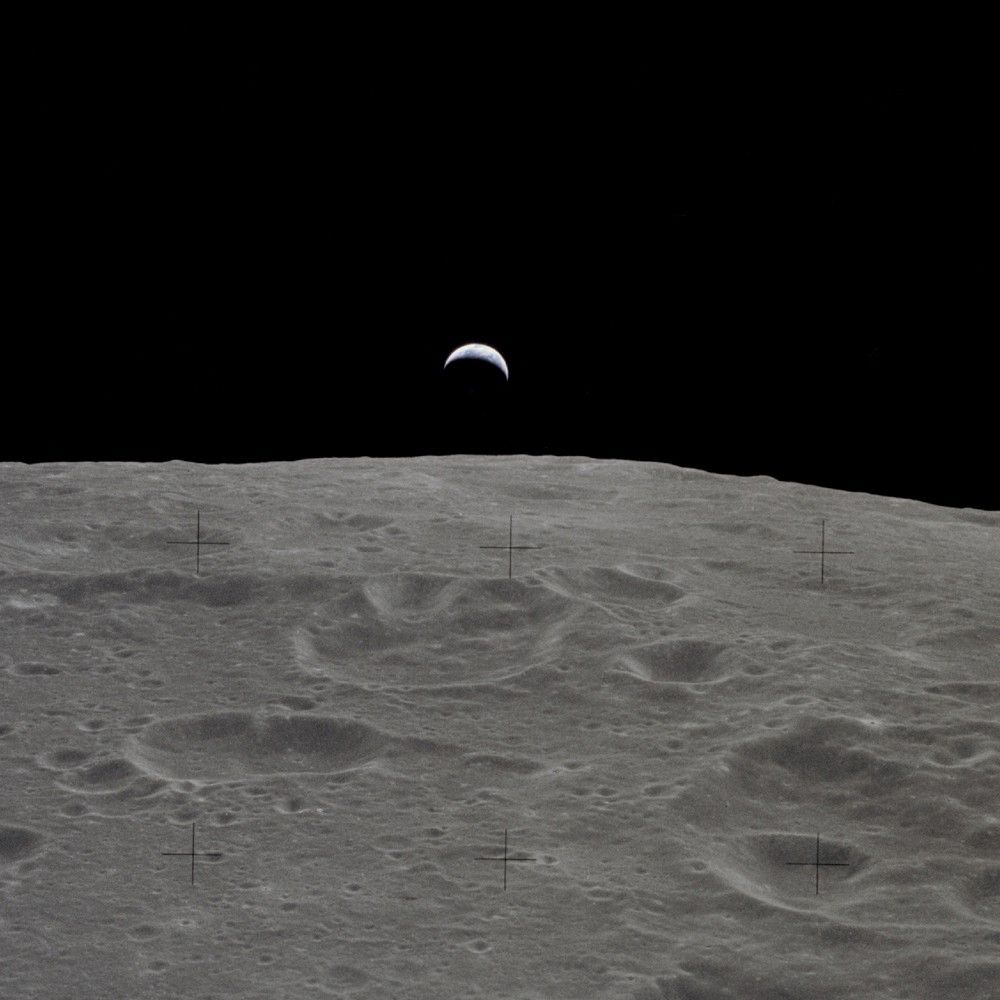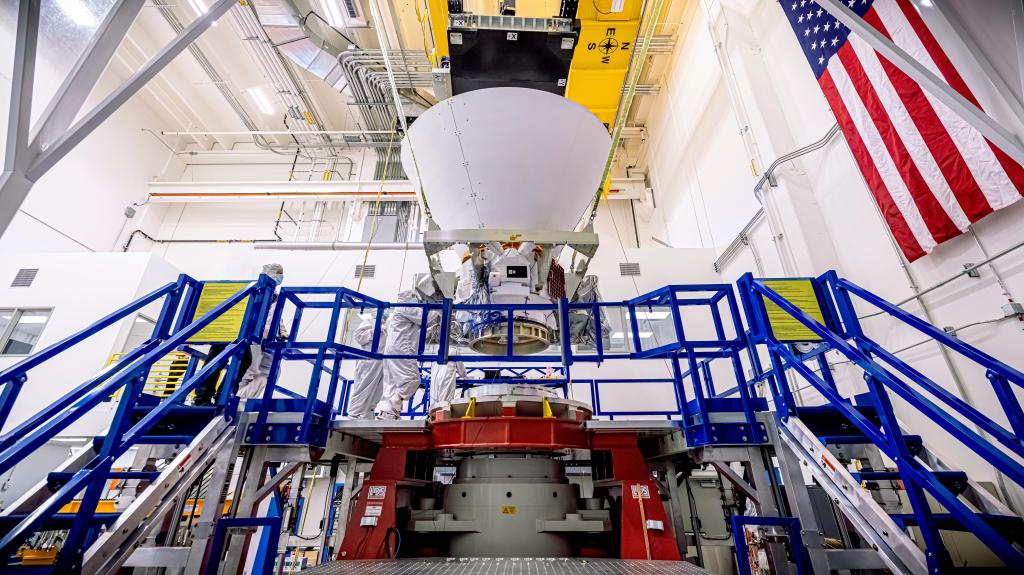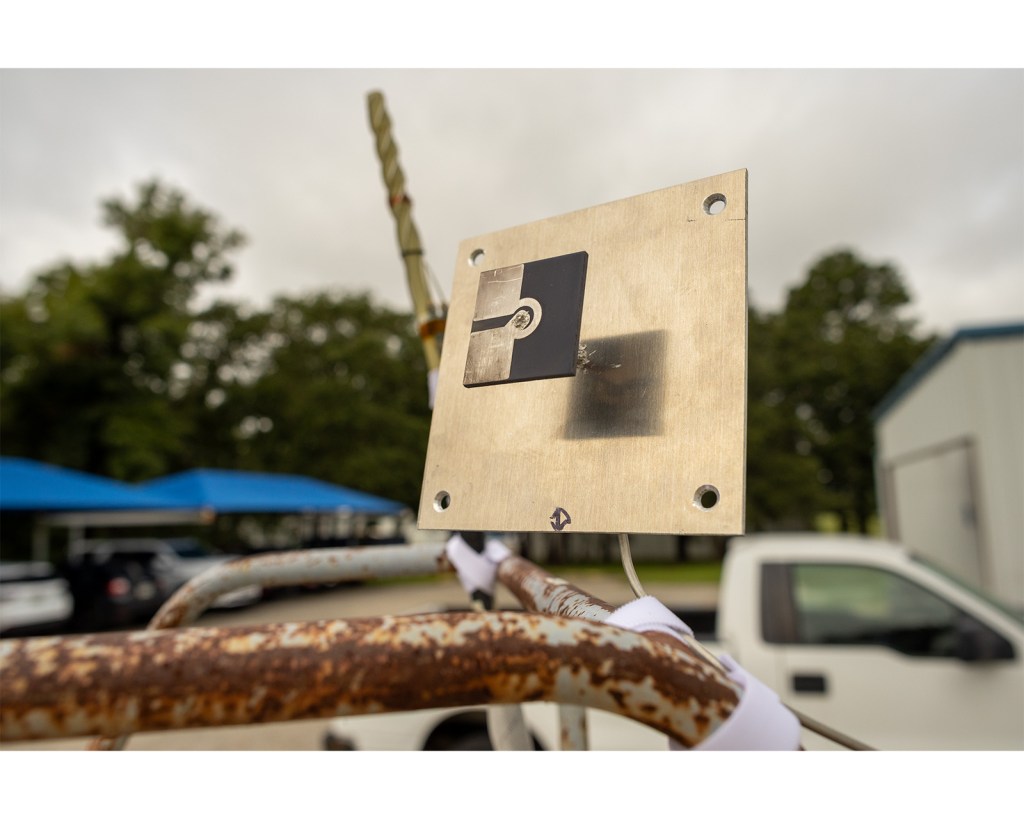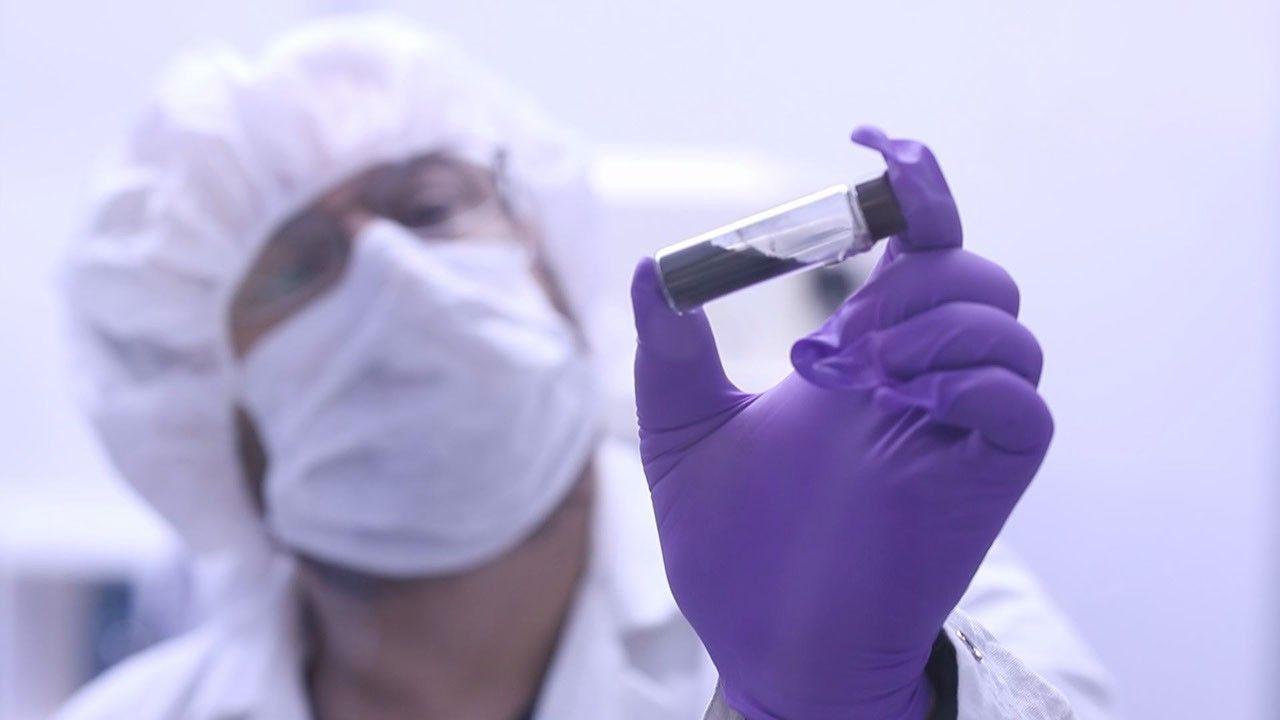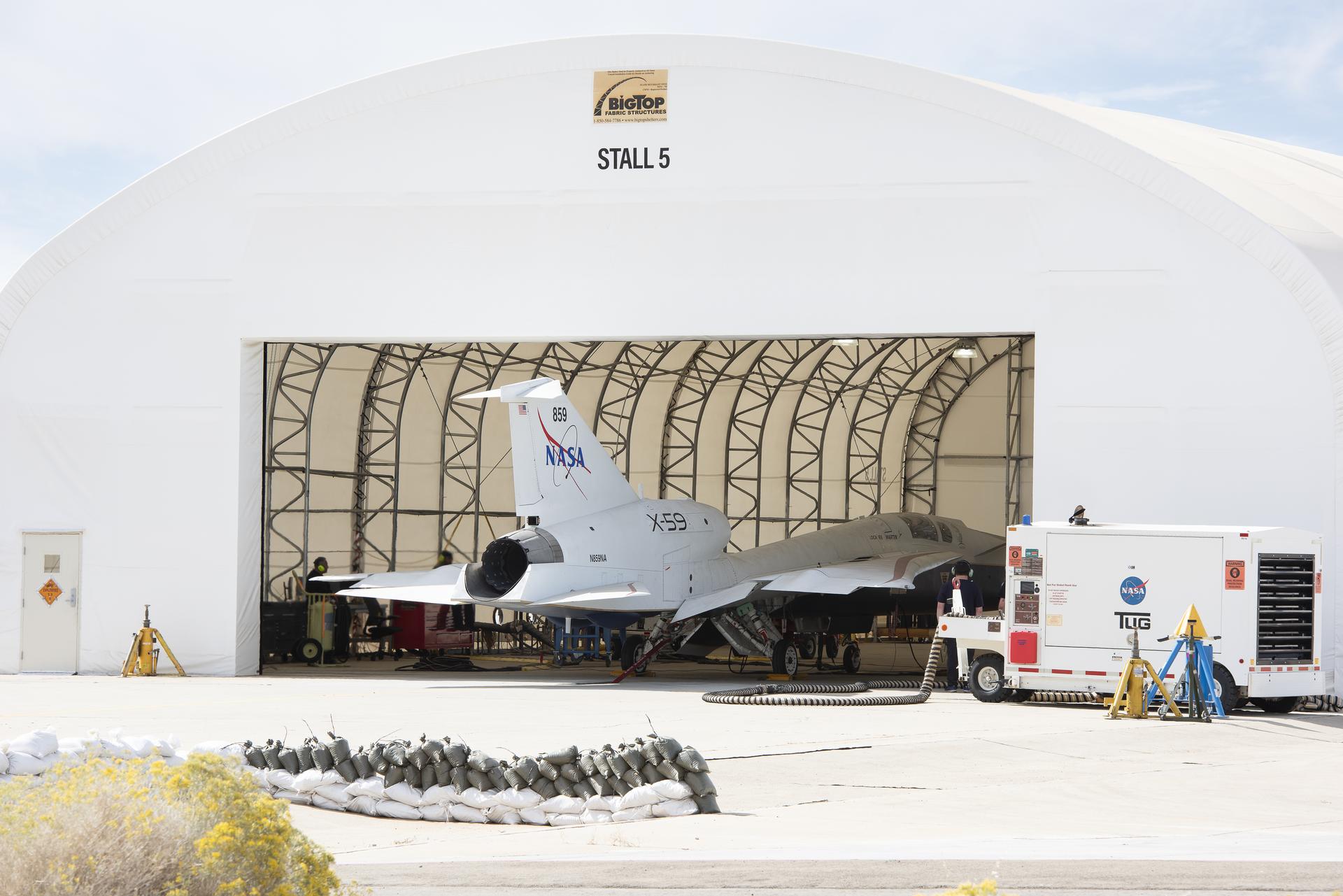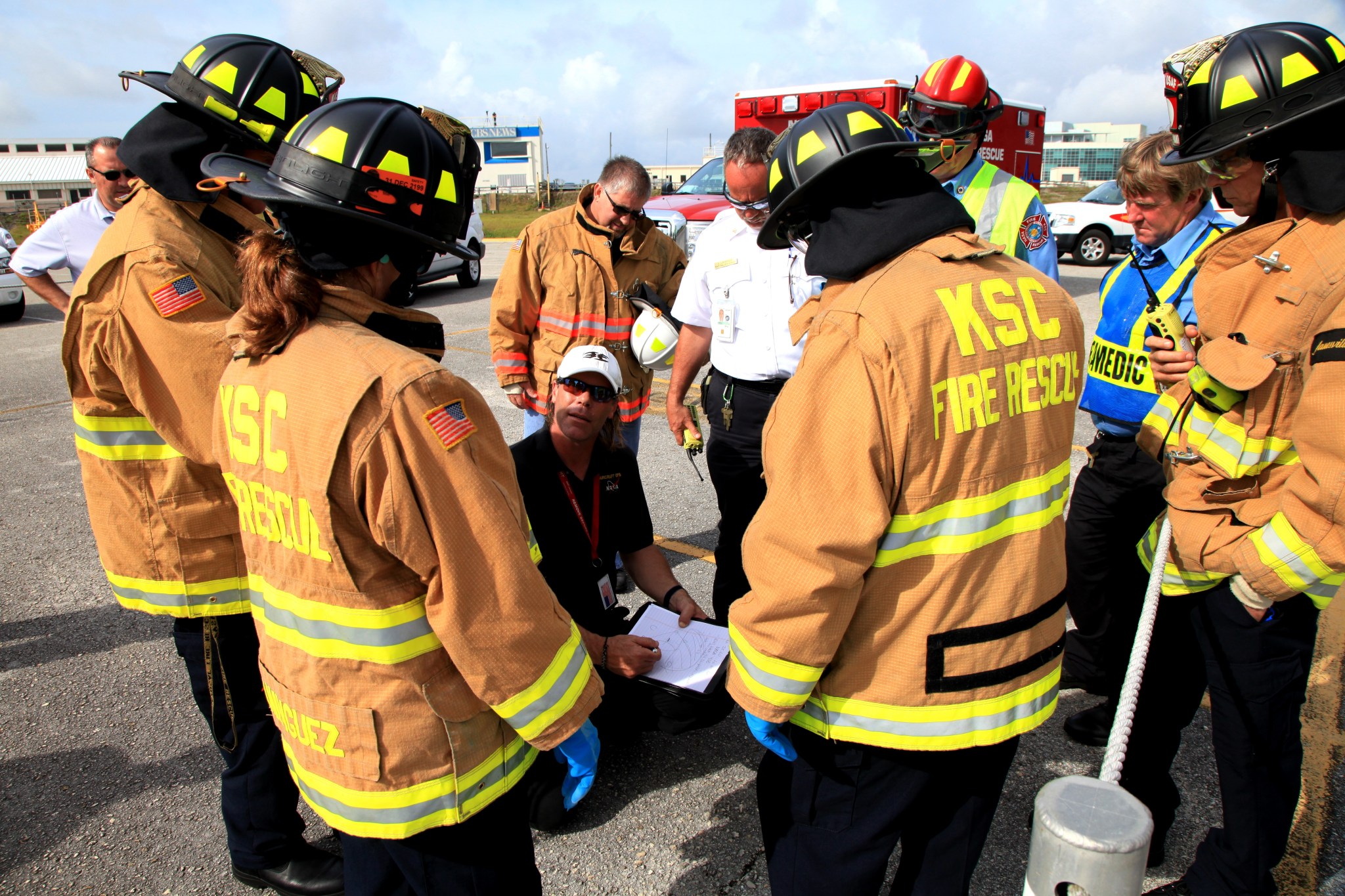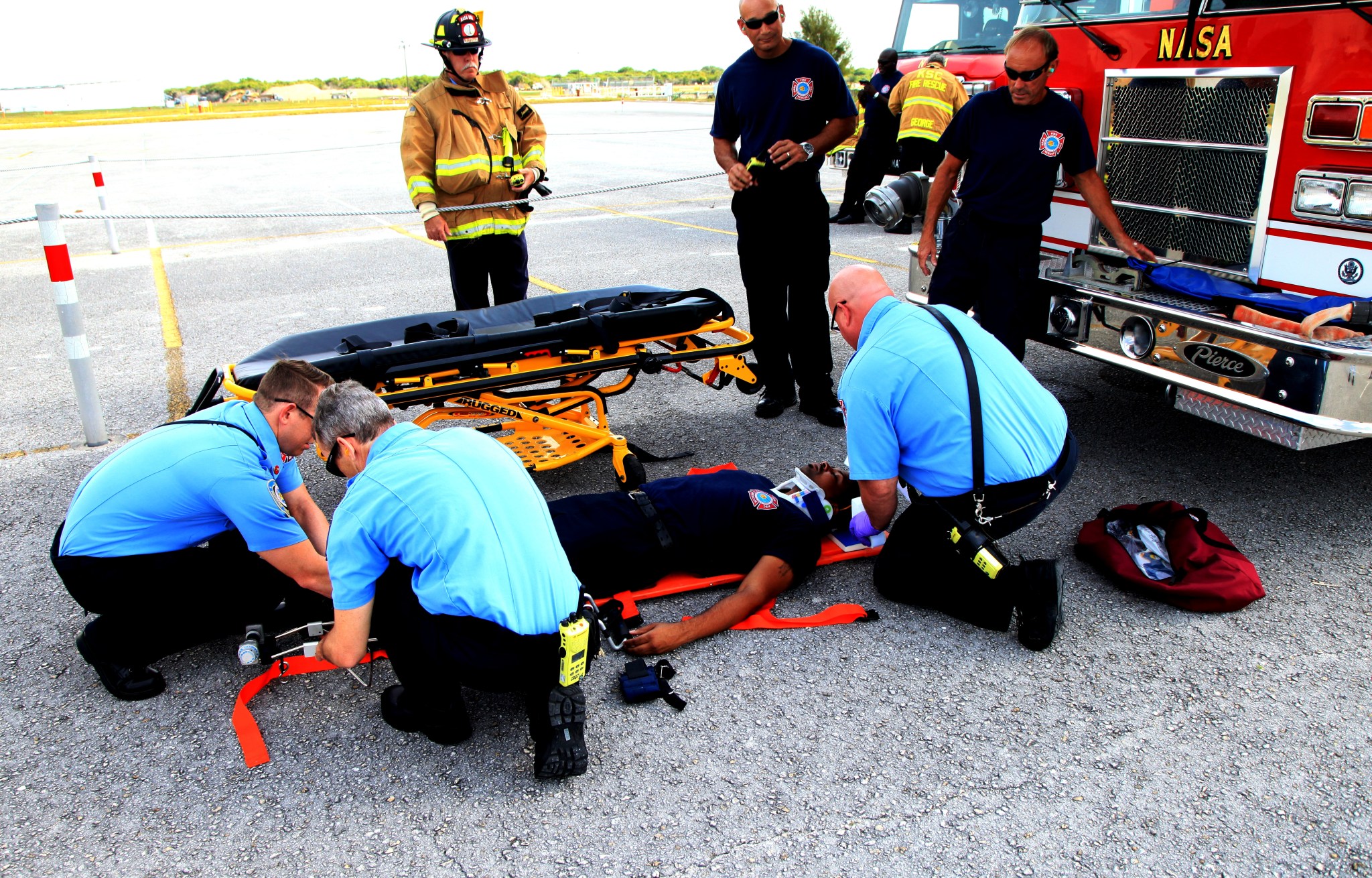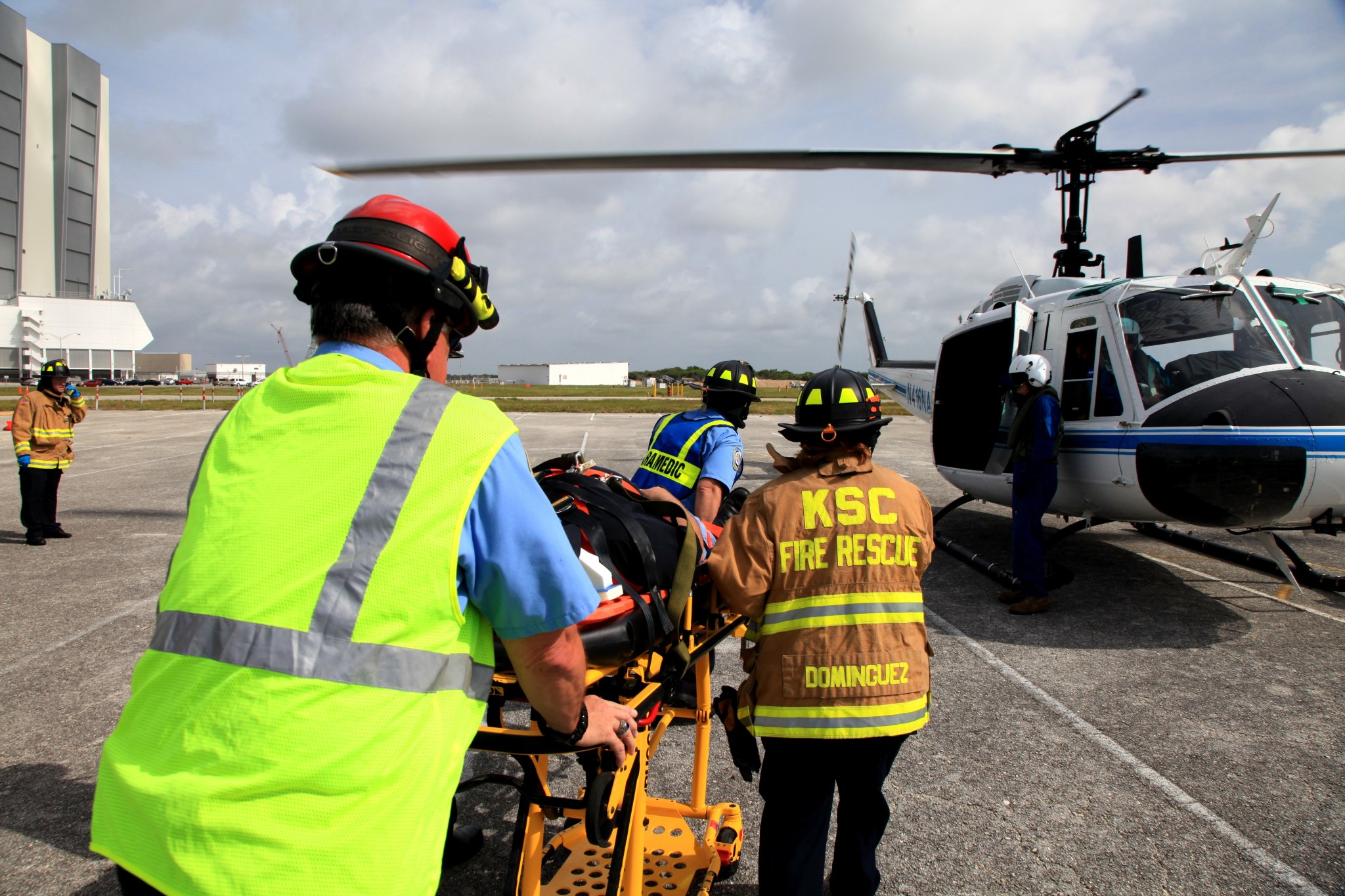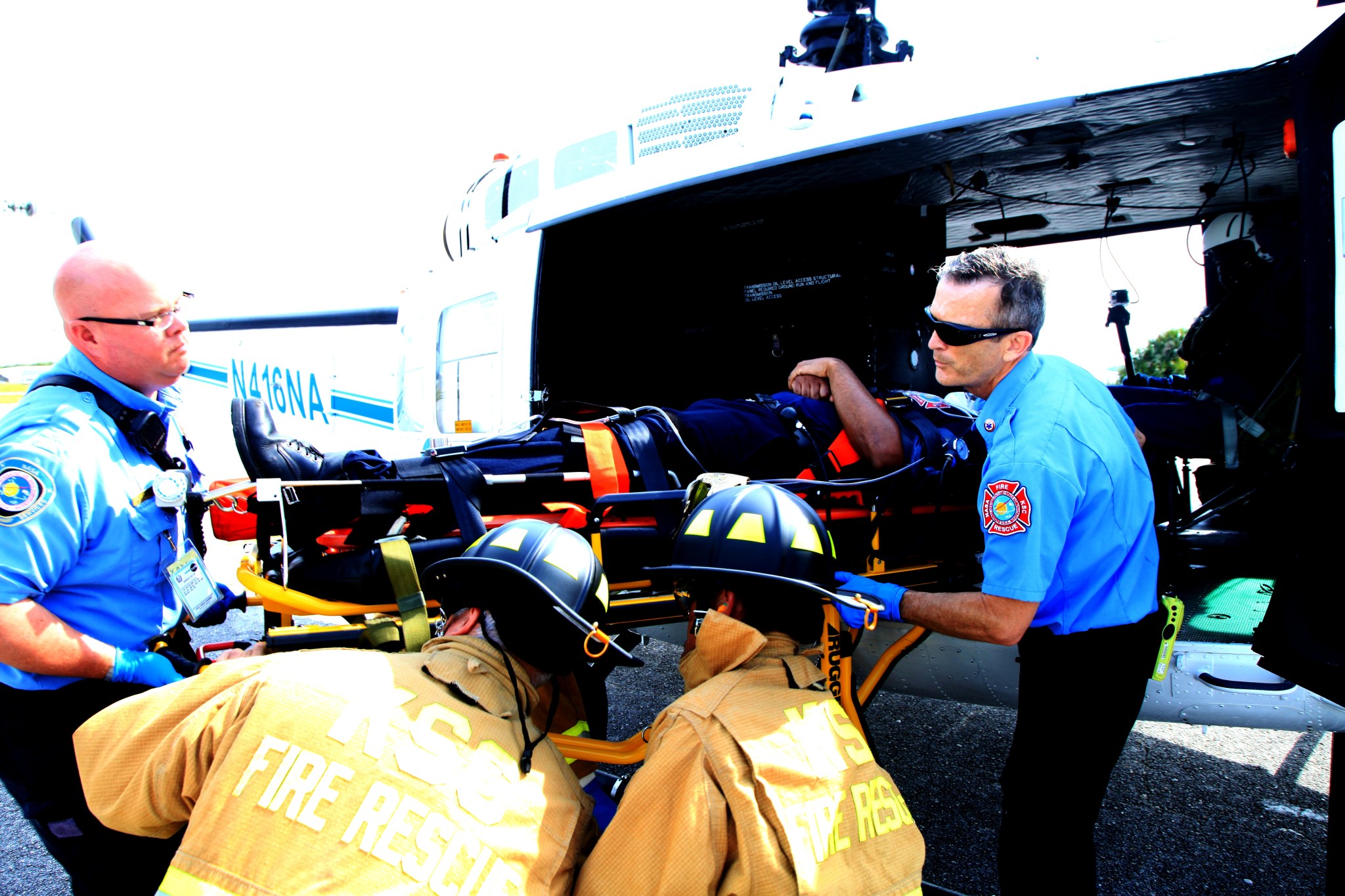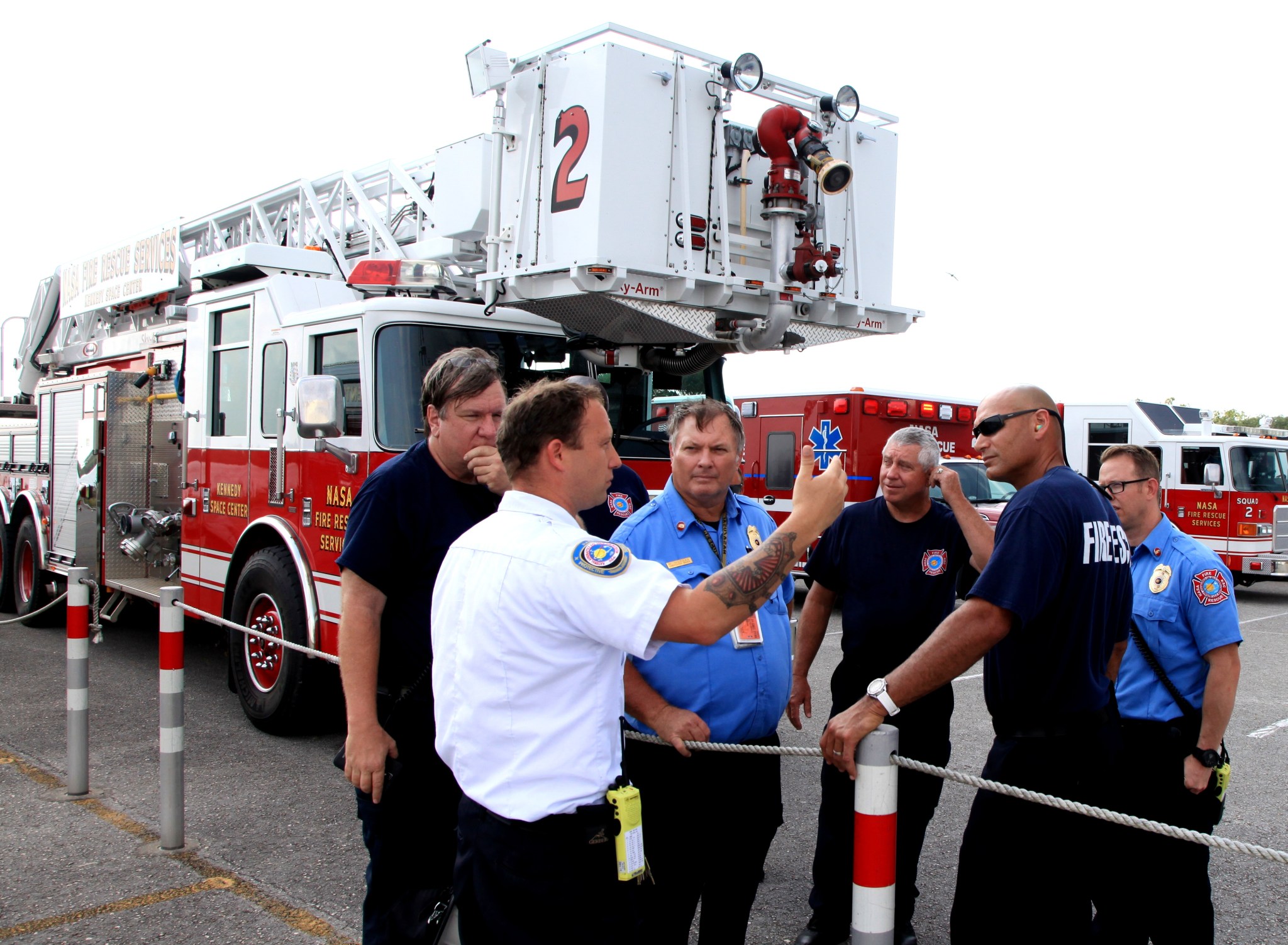An injured Kennedy Space Center employee is strapped to a stretcher in a parking lot near the Vehicle Assembly Building. Paramedics secure his head and neck with braces while others strap his left leg to a metal splint. Directed in by Fire Rescue personnel, a NASA helicopter descends and lands on an asphalt surface, touching down within minutes of the call for help. The injured employee is quickly rolled on a stretcher to the chopper as its rotors continue to turn. Only three minutes after the helicopter touchdown, the stretcher is secured, the door closed and the rescue mission is ready to take the patient — “as the crow flies” — directly to the nearest medical facility.
The activity taking place in Kennedy’s Launch Complex 39 turn-basin parking lot was only one of several drills on April 29 and 30. It was part of a new training program that was developed by Kennedy’s Fire Rescue department along with NASA Aircraft Operations to sharpen the skills needed to help rescue personnel learn how to collaborate with helicopter pilots in taking injured patients to hospitals as quickly as possible.
George Jacobs, NASA’s deputy director of Center Operations, noted that improving the level of emergency care capabilities at Kennedy is crucial as facilities are upgraded for future operations.
“As we become more of a multi-user spaceport and go back to human space launches, we will have more and more people coming on the center to work,” he said. “New facilities will be built, others will be modified. This capability is for all of us, not just NASA employees, but anyone who is a part of our multi-user spaceport.”
Jacobs believes Kennedy’s Fire Rescue is already among the best.
“They are world class,” he said. “We’re privileged to have these capabilities and resources. Hats off to these guys. They are willing to put themselves in harm’s way to save someone else’s life and that gives you a good feeling as a Kennedy employee.”
In most cases, if an individual is injured at Kennedy and needed a quick evacuation, paramedics would call for a specially equipped helicopter service such as Life Flight to transport the patient to a hospital. This air ambulance uses state-of-the-art equipment and highly skilled medical and aviation professionals making it a flying emergency room. The Florida spaceport’s helicopters are available in the event an air ambulance is not.
According to Bill Martin, a URS Federal Technical Services pilot in NASA Aircraft Operations, space center employees and visitors can feel secure in knowing they are in one of the safest areas in Central Florida due to the presence of the skilled and highly-trained Fire Rescue team at the spaceport and the assets available to aid their work.
“There is always a risk of an accident, and there is a possibility that our firefighters here may need to utilize our helicopters to quickly transport patients to a facility providing a higher level of care,” he said. “Kennedy covers a very large area at 144,000 acres. It’s relatively difficult to quickly get to all the different areas of the center, so having resources available, such as a helicopter, allows us to get to these remote areas and transport people as fast as possible.”
Medical experts note that in an emergency situation, the first 60 minutes after an accident is what they refer to as the “golden hour.”
“If rescue personnel can get a critical care patient extricated from the situation and transported to a local trauma center in an hour or less, it greatly improves the chances for survival and recovery,” Martin said.
Mark Huetter of Chenega Security & Support Solutions is assistant chief of Training for Kennedy’s Fire Rescue. He explains that it is important to conduct this type of training not only for space center fire rescue personnel, but also for Aircraft Operations.
“We all want to be on the same page when transporting a patient, due to the hazardous environment,” he said. “There are many obstacles such as trees, debris and poles.”
Reducing the risks to both fire rescue personnel on the ground, as well as helicopter pilots in a crisis situation, has been the focus of Landing Zone Coordinator Training led by Martin. A pilot for 35 years, he has performed about 1,100 helicopter emergency medical service (HEMS) flights during the past decade. It is one of the most high-risk occupations in America.
“Whether landing on approved surfaces, grass fields, dirt areas, even roads, there’s a lot of things that can cause a great deal of concern,” Martin said.
Martin explained that the helicopter evacuation training program took place in three phases and was developed to help NASA Aircraft Operations and NASA Fire Rescue mitigate risks.
“The first phase is a ground school portion which takes about an hour,” he said. “The second phase is actually bringing in outside helicopter HEMS providers and getting them familiar with the NASA center, as well as interaction with NASA Fire Rescue crews. And the third phase is actually going out and producing simulations where we set up landing zones and use NASA’s aircraft to practice the HEMS operation.”
According to Huetter, the decision to transport a patient by air or by land is made by the paramedics.
“If they feel the patient must be airlifted out, believing the person needs that higher level of care fast, then they will call in a medical evacuation by helicopter,” he said.
On the second day of the training, Lois Dominguez, a Fire Rescue driver with Chenega Security and Support Solutions, reiterated that working quickly is always the goal.
“We want to be on scene and get the injured person out as fast as possible,” she said. “That means loading the patient, ideally, in five minutes and, certainly, in no more than 10 minutes.”
In this scenario, Jacobs served as the “injured” person. Paramedics removed him from a vehicle, placed him on a stretcher and immobilized his head. At the same time, lieutenants with Kennedy Fire Rescue directed a NASA helicopter into the landing zone. The medical staff moved the stretcher to the waiting helicopter, secured the stretcher in place and closed the door. It took exactly five minutes.
The next decision is where to take the patient.
“What determines where we take a patient really comes down to the medical crew onboard the aircraft,” Martin said. “The pilot is prepared to take the aircraft and passengers to whatever hospital they need to. Usually in a trauma situation, patients are taken to a trauma center in Brevard County, Orlando, Daytona or even Gainesville depending on the severity of their injuries.”
Jacobs noted that launching rockets at a spaceport is dangerous business requiring people to perform activities such as being around caustic propellants and activities at heights.
“As Kennedy moves forward, there will be additional programs such as the Space Launch System, new operations and other launch customers,” he said. “So given the future and the road we’re following, this capability isn’t a luxury, it’s a necessity.”

